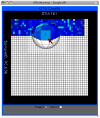Using QIIME to analyze 16S rRNA gene sequences from microbial communities
- PMID: 22161565
- PMCID: PMC3249058
- DOI: 10.1002/0471250953.bi1007s36
Using QIIME to analyze 16S rRNA gene sequences from microbial communities
Abstract
QIIME (canonically pronounced "chime") is a software application that performs microbial community analysis. It is an acronym for Quantitative Insights Into Microbial Ecology, and has been used to analyze and interpret nucleic acid sequence data from fungal, viral, bacterial, and archaeal communities. The following protocols describe how to install QIIME on a single computer and use it to analyze microbial 16S sequence data from nine distinct microbial communities.
© 2011 by John Wiley & Sons, Inc.
Figures












References
-
- Legendre P, Legendre L. Numerical Ecology. Elsevier Science; 1998.
Publication types
MeSH terms
Substances
Grants and funding
LinkOut - more resources
Full Text Sources
Other Literature Sources
Medical

